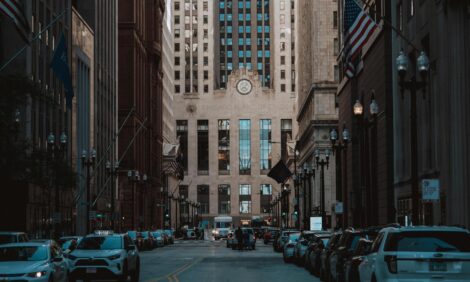



CME: Producers Aware Good Times Won't Last
US - USDA’s monthly Crop Production and World Supply and Demand Estimates reports will be released on Friday and Dow Jones published the results of its monthly pre-report survey of market analysts today, write Steve Meyer and Len Steiner.The key numbers for corn and soybeans are shown below. Analysts expect USDA to lower both yields and total crop size for both corn and soybeans. The average estimates are roughly 1 per cent lower than USDA’s August numbers for corn yield and production and soybean production and 0.5 per cent lower for soybean yield. Both crops would still be record-large if the averages of analysts’ predictions are correct. These crop sizes and yields imply harvested acres of 80.926 million for corn and 77.763 million for soybeans. Those compare to 81 and 78 million acres, respectively, for the two crops in the July and August WASDE reports. We still wonder if USDA might reduce these harvested acres numbers given this summer’s wet conditions in some important corn and soybean states.

It is not often that one gets to witness the beginning or end of a true long-run phenomenon. One obvious difficulty of that statement is that realizing you have witnessed the beginning of one could take years. And by then, who can actually remember witnessing the beginning? But we digress.
We may be, however, witnessing the end of the hog cycle — one of the most regular and long-lived cycles in agriculture and, perhaps, economics. Our textbooks claimed that the hog cycle could be traced back to the 16th century in England and US data show a regular how cycle prior to 1900. But why has there been a hog cycle and how is it changing?
Textbooks once claimed that the reason for the hog cycle (or any other cycle, for that matter) was because economic agents expected current conditions to last a long time. Probably not forever but for the foreseeable future at least. Therefore, if conditions were bad, some agents would exit the business, driving supplies lower and prices higher thus making conditions better. If conditions were good, existing producers would produce more or outsiders would enter the business, driving supplies higher and prices lower thus putting the kibosh on profits and, according to this theory, eventually reversing everyone’s viewpoint and starting the cycle all over again. That explanation seems to assume that people are very, very stupid and never learn a clear lesson: Things change. If one knows conditions are going to change, why would one act as if they are not going to change?
A better explanation was that producers know good times will not last forever but plan to survive the down times in order to be ready for good times to return. About the only time that someone can grow in or enter into a business is when things are good because cash, from either operations or lenders or outside investors, is available only when conditions are good. Conversely, producers cut back or exit in tough times knowing full well things will get better but realizing that they and/or their banker simply can not or will not put enough cash into the business to get it to those promised good times.
The advent of high-investment facilities has mitigated the magnitude of output shifts and, quite possibly, lengthened the period from peak to peak or trough to trough for the hog cycle. The chart below shows that year-on-year percentage changes in hog slaughter have gotten smaller and smaller with the sole exception of the output surge of late 2007 and 2008 which was caused by circovirus vaccines. The standard deviation of quantity changes has gotten progressively smaller each decade since 1970. It is not yet zero but is getting close and the once clearly-discernible pattern is much more random.

But the hog price cycle appears alive and well even if it is much more erratic. The hog price cycle continues to include year-on-year changes of 30 to 40 percent even as year-on-year output changes get smaller and smaller. This implies a more and more inelastic demand for hogs, meaning that the “proper” output level is critical for producers’ economic well-being.







